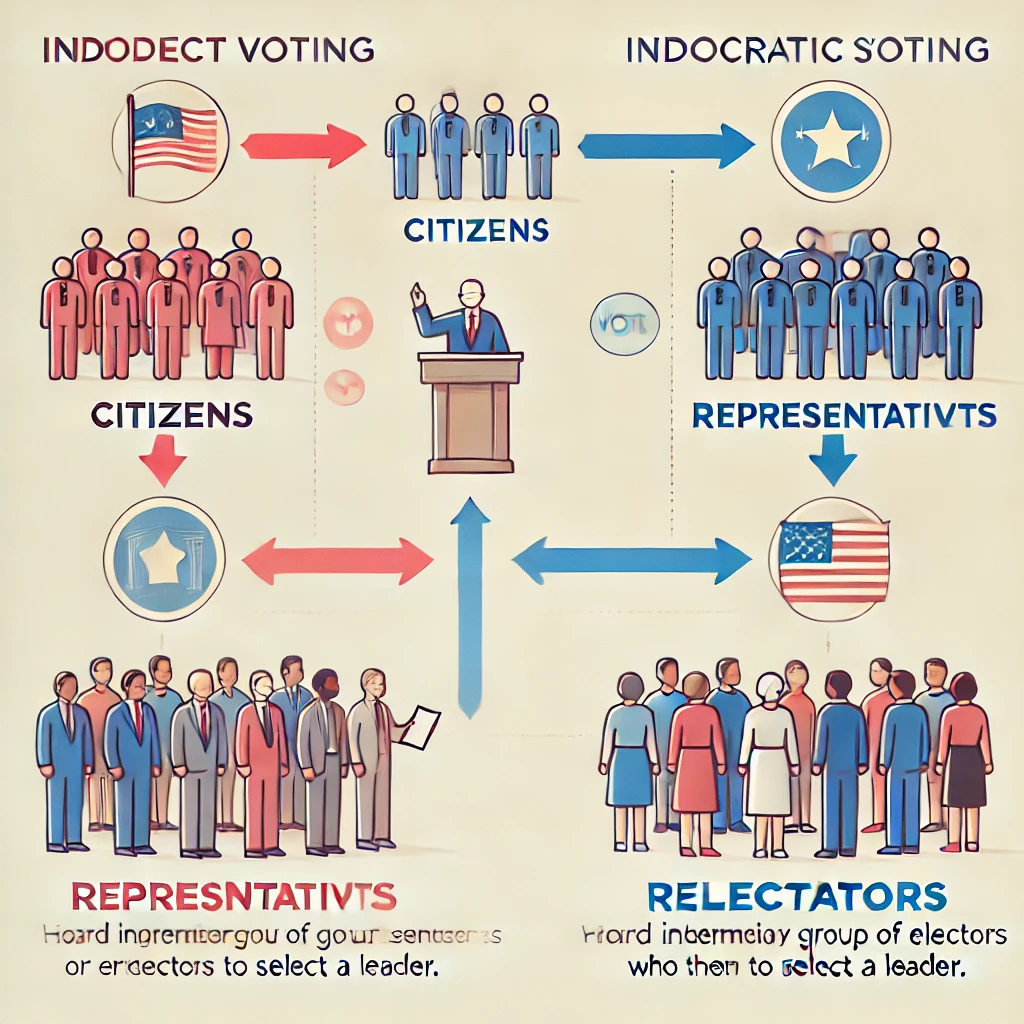Indirect Voting for Dummies: An Easy Guide to Representative Voting Systems
Voting stands as the backbone of democracy, empowering citizens to select leaders who make pivotal decisions. While many are familiar with direct voting—where individuals cast votes for a specific candidate—some systems use indirect voting, which adds a layer of complexity. This Indirect Voting for Dummies guide will walk you through the essentials, explaining how indirect voting works, why it’s beneficial, and the reasons some countries use it.
Explore more : Vicki Naas Frederick MD Employment History
Understanding the Basics of Indirect Voting
In simple terms, indirect voting is a system where citizens vote for representatives who then choose leaders on their behalf. Unlike direct voting, where each vote counts directly toward electing a candidate, indirect voting relies on intermediaries. Often called electors, these representatives speak for the voters, casting final votes in a centralized electoral process.
Key Differences Between Direct and Indirect Voting
In a direct voting system, each citizen’s vote directly influences the outcome by supporting specific candidates. However, indirect voting separates this process into two distinct stages. First, citizens elect representatives, such as a council or an electoral college, who then make the final decision. Consequently, this structure enables elected officials to weigh different factors, which adds a layer of consideration.
Tracing the History of Representative Voting Systems
Indirect Voting for Dummies systems have deep historical roots, tracing back to ancient Greek and Roman practices. In these early democracies, citizens often appointed delegates to represent their interests. Over time, indirect voting evolved and became widely used, particularly in federal systems or countries with large populations.
Why Democracies Use Representative Voting Methods
Countries often adopt indirect voting to balance representation and promote efficient decision-making, especially in complex political environments. Large countries with diverse populations, such as the United States and India, use representative voting in specific contexts to ensure fair regional representation. Additionally, this system can prevent impulsive decisions, promoting a more thoughtful voting process.
The Role of the Electoral College in U.S. Voting
The United States’ Electoral College stands as a well-known example of indirect voting. In presidential elections, for instance, citizens vote for electors rather than directly voting for candidates. These electors then cast the official votes to determine the presidency. Therefore, the Electoral College system serves to balance state representation with the public’s opinion, preserving the interests of smaller states.
Representative Voting in Parliamentary Systems
In many parliamentary democracies, indirect voting is essential in selecting officials like the prime minister. Citizens elect members of parliament (MPs), who then choose a prime minister from among their ranks. Thus, this process avoids the direct election of the head of government, aligning the government with the legislature’s majority.
Key Benefits of Indirect Voting Systems
Indirect voting offers several distinct advantages that make it a preferred system in some democracies:
- Balanced Representation: Indirect voting ensures that both densely and sparsely populated regions receive fair representation.
- Prevention of Populism: By adding a representation layer, indirect voting can help moderate populist trends, which often promotes stability.
- Increased Deliberation: Representatives in indirect systems can consider factors beyond public opinion, leading to more informed decisions.
- Flexible Adaptability: Additionally, indirect voting can be adapted to balance regional interests, contributing to political cohesion.
Potential Drawbacks of Indirect Voting
Despite its benefits, indirect voting also comes with notable drawbacks:
- Reduced Direct Influence: Citizens may feel distanced from decision-making, as their votes do not directly decide leaders.
- Potential for Manipulation: Representatives may be susceptible to outside influence, which could misrepresent public interest.
- Complexity and Confusion: Furthermore, indirect voting systems can be complex, which may lead to misunderstandings and reduced participation.
- Risk of Unrepresentative Outcomes: In some cases, indirect voting may produce outcomes that do not match the popular vote.
Key Examples of Representative Voting Systems Worldwide
Different countries implement indirect voting in various forms, each adapting the system to suit its unique political environment:
- United States: The Electoral College system indirectly elects the president, balancing both state and population representation.
- India: In India, the president is elected indirectly by an electoral college composed of members of parliament and state legislators.
- Germany: Germany’s Federal Convention, made up of Bundestag members and state representatives, elects the president through indirect voting.
Tips for Engaging in Indirect Voting Systems
Understanding how to participate in indirect voting starts with recognizing your representative’s role. By researching their voting history, priorities, and stance on critical issues, you can make informed choices. Moreover, engaging with representatives through outreach and voicing concerns can amplify your influence in an indirect voting system.
FAQs About Indirect Voting
- Is indirect voting less democratic than direct voting?
- Indirect voting is not inherently less democratic; instead, it balances representation and effective decision-making, ensuring diverse voices are heard.
- Why do some countries prefer indirect voting?
- Countries with large or diverse populations use indirect voting to prevent regional biases, ultimately ensuring balanced representation.
- Can indirect voting outcomes differ from the popular vote?
- Yes, indirect voting may yield different outcomes due to the intermediary role of representatives, which could lead to different electoral results.
Final Takeaways on Representative Voting
Although indirect voting may seem complex, it is a democratic tool designed to balance representation, stability, and effective decision-making. By adding a layer of representation, indirect voting allows for thoughtful electoral outcomes, especially in large, diverse democracies. Understanding indirect voting, its benefits and drawbacks, and how to participate empowers citizens to navigate this unique system confidently.




